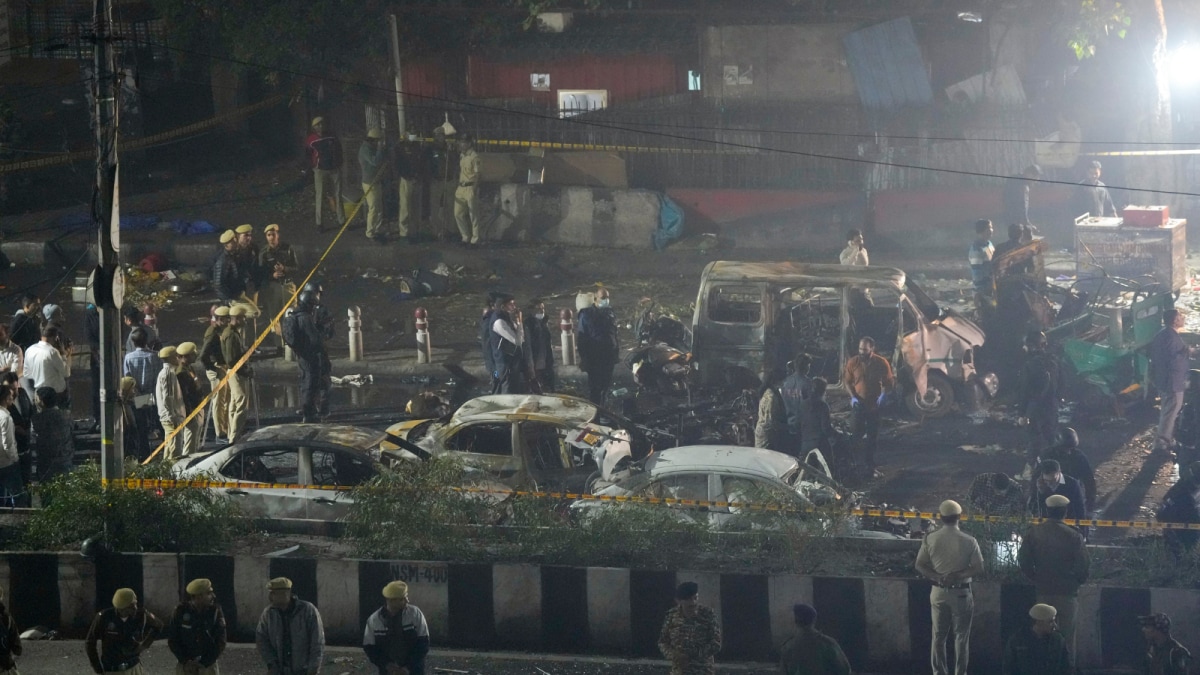ARTICLE AD BOX
Last Updated:November 13, 2025, 07:15 IST
Delhi faces hazardous air as AQI hits 455 in Daryaganj and 460 in Bawana. GRAP 3 enforced, stubble burning worsens pollution, and primary schools shift to hybrid mode.

Commuters make their way amid low visibility as air quality continues to deteriorate in Delhi-NCR, in Gurugram. (PTI)
A thick layer of toxic smog continued to envelope large parts of Delhi on Thursday morning, with visuals from the Daryaganj area showing severely reduced visibility as residents stepped out amid hazardous air quality.
According to data from the Central Pollution Control Board (CPCB), the Air Quality Index (AQI) in Daryaganj stood at 455, falling in the ‘Severe’ category. The dense haze and pungent air made breathing difficult, forcing many commuters to wear masks and cover their faces.
As per CPCB data on Thursday, Anand Vihar recorded an AQI of 431, Alipur reported 418, and Bawana registered reported 460. Chandni Chowk recorded an AQI of 455, while RK Puram and Patparganj logged 444 and 423, respectively.
As per CPCB norms, an AQI between 0–50 is considered ‘Good’, 51–100 ‘Satisfactory’, 101–200 ‘Moderate’, 201–300 ‘Poor’, 301–400 ‘Very Poor’, and 401–500 ‘Severe’.
With a 24-hour average air quality index (AQI) of 418 at 4pm on Wednesday, Delhi ranked as the most polluted city in the country along with Haryana’s Jind, according to the Central Pollution Control Board (CPCB).
Data from the Decision Support System (DSS) indicated that stubble burning contributed more to Delhi’s pollution on Wednesday than vehicular emissions, accounting for 22.4% of PM2.5 levels, while transport sources made up 15.5%.
GRAP 3 Imposed
The Commission for Air Quality Management (CAQM) in the National Capital Region (NCR) on Tuesday enforced Stage 3 of the Graded Response Action Plan (GRAP), ordering a ban on non-essential construction and demolition activities and restricting the use of BS-III petrol and BS-IV diesel four-wheelers in Delhi, Gurugram, Faridabad, Ghaziabad, and Gautam Budh Nagar.
The Delhi Directorate of Education (DoE) also ordered all primary schools up to Class 5 to switch to hybrid mode from Wednesday until further notice.
In November last year, Delhi witnessed eight “severe" air quality days, with the AQI peaking at 494 on November 18 — the second-highest level ever recorded in the Capital. Historical data reveals that the city registered nine such days in November 2023, three in 2022, eleven in 2021, and between five and ten “severe" days in the preceding years.
First Published:
November 13, 2025, 07:15 IST
News new-delhi-news Delhi Remains Shrouded In Toxic Haze, Air Quality ‘Severe’ In Most Areas; Visibility Drops
Disclaimer: Comments reflect users’ views, not News18’s. Please keep discussions respectful and constructive. Abusive, defamatory, or illegal comments will be removed. News18 may disable any comment at its discretion. By posting, you agree to our Terms of Use and Privacy Policy.
Read More

 1 hour ago
5
1 hour ago
5








 English (US) ·
English (US) ·